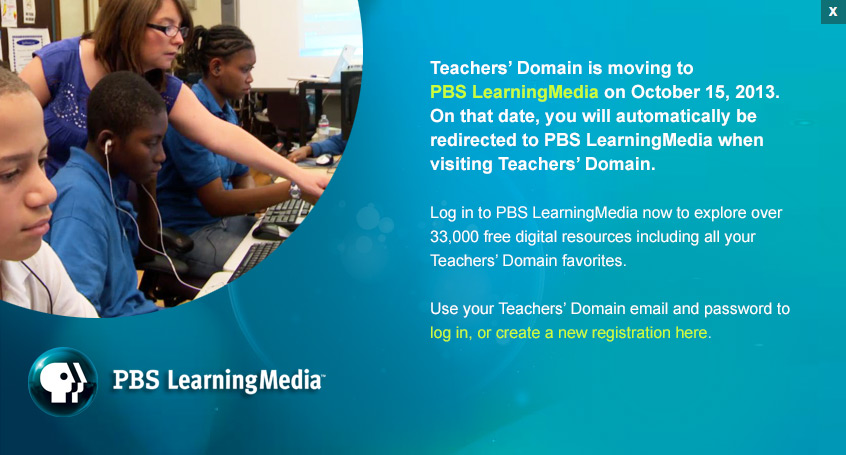Teachers' Domain - Digital Media for the Classroom and Professional Development
User: Preview
Mountain Maker, Earth Shaker
(Interactive)
Tectonic Plates and Plate Boundaries
(Interactive)
Tectonic Plates, Earthquakes, and Volcanoes
(Interactive)
 Loading Standards
Loading StandardsAccording to the theory of plate tectonics, Earth's crust is composed of a number of individual plates that change shape and position over time. Geophysical evidence indicates that the face of Earth's surface has changed significantly since its initial formation and that the plates on which the continents are located are in constant motion. The movement of the plates is responsible for the formation of ocean basins, mountain ranges, islands, volcanoes, and earthquakes. Important concepts in the theory of plate tectonics include the following:
In this lesson, students are introduced to the theory of plate tectonics and explore how the theory was developed and supported by evidence. Through class discussion, videos, and activities, students seek connections between tectonic activity and geologic features and investigate how the theory of plate tectonics evolved.
Two class periods
If possible, arrange computer access for all students to work in pairs. Make copies of the World Map With Shorelines and Continental Shelf Boundaries PDF Image to distribute to students. Just before class, have the first two media resources ready: Tectonic Plates, Earthquakes, and Volcanoes Flash Interactive and Plate Tectonics: An Introduction QuickTime Video.
1. Discuss how Earth is physically changing and ask students for their ideas about why it changes. Write the term plate tectonics on the board and ask if anyone has heard of this theory. Record class comments on the board and save for later.
2. Show students the locations of earthquakes around the world using the Tectonic Plates, Earthquakes, and Volcanoes Flash Interactive. Switch to the display of volcanoes. Do not show the plate boundaries at this point. Then ask:
3. Show the Plate Tectonics: An Introduction QuickTime Video. After viewing the video, return to the Tectonic Plates, Earthquakes, and Volcanoes Flash Interactive and now show the overlay of all three views: earthquakes, volcanoes, and plate boundaries. Point out the Ring of Fire. Ask students to interpret why the active areas are located where they are and to relate their interpretations to their previous comments and possible explanations.
4. Allow time for students to further explore the subject individually or in pairs. Distribute copies of the World Map With Shorelines and Continental Shelf Boundaries PDF Image and have students cut out the continents (following the continental shelf lines) to see how they fit together. At the same time, have students work with the Mountain Maker, Earth Shaker Flash Interactive to learn about the different types of boundaries. During this activity, have students write a list of relevant vocabulary words in their science journal. Encourage students to write the definitions in their own words, but to use the textbooks/computer to verify them.
5. Show the Plate Tectonics: The Scientist Behind the Theory QuickTime Video. Ask:
6. Remind students about the scientific process and discuss the importance of evidence for a scientific theory. Show the Plate Tectonics: Further Evidence QuickTime Video and the Plate Tectonics: Lake Mead, Nevada QuickTime Video. Ask:
7. The discovery that the ocean floor has a massive ridge running down the middle, that the oldest rocks are farthest from the ridge, and that the banded rock has preserved a record of periodic magnetic reversals are key pieces of evidence for plate tectonics. Have students work in groups to devise a demonstration of how the Atlantic Ocean was formed by sea-floor spreading. You may want to help students get started by discussing ways to represent the spreading apart of the ocean floor and the resulting appearance of the new sea floor. After the students have shown their demos, you may wish to show this effective demonstration:
8. Check students' understanding of plate motions by showing the Tectonic Plates and Plate Boundaries Flash Interactive with the color-coded and defined boundaries. Have students indicate which direction the plates are moving at the different types of boundaries. What geologic features could be seen at each boundary?
9. Have students watch the Plate Tectonics: The Hawaiian Archipelago QuickTime Video. Discuss the following:
10. Have students work in small groups to simulate the formation of the Hawaiʻian Islands. Distribute the following materials to each group:
Have students add small amounts of water to the pan until the cornstarch reaches a pasty consistency. Instruct students to hold one edge of the pan over the candle until bubbles form in the cornstarch. Then tell them to very slowly move the pan across the flame. As the pan moves, they should notice the row of bubbles that is created. Discuss the following:
11. Revisit the information about plate tectonics that you recorded on the board in Step 1, and update it as needed.
Have students discuss the following:
The Digital Library for Earth System Education (www.dlese.org) offers access to additional resources on this topic.
 Teachers' Domain is proud to be a Pathways portal to the National Science Digital Library.
Teachers' Domain is proud to be a Pathways portal to the National Science Digital Library.
